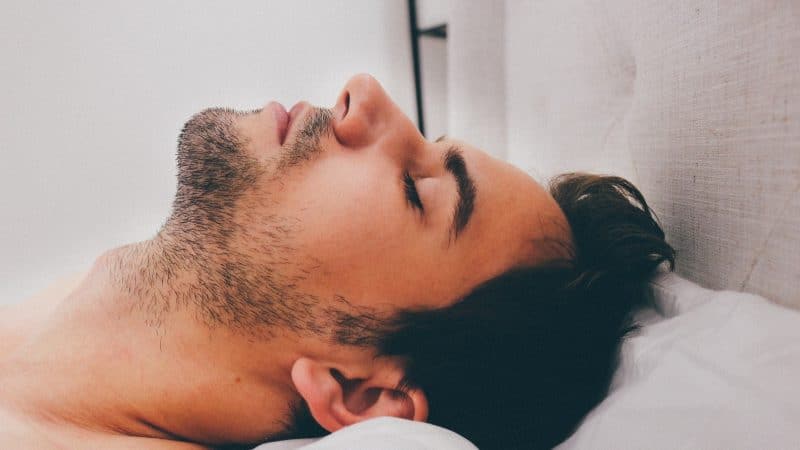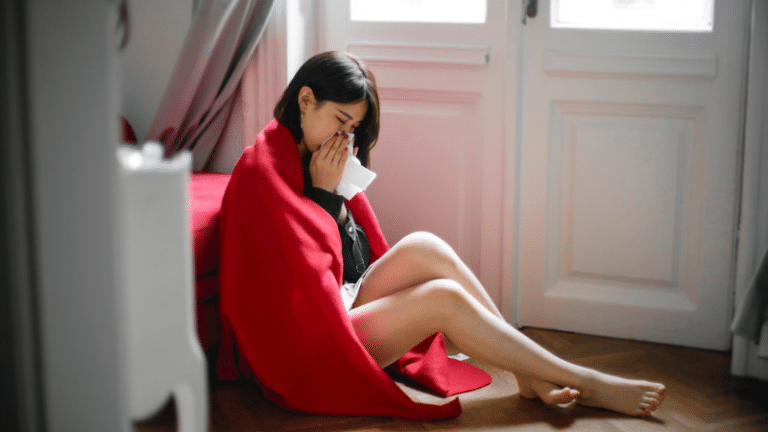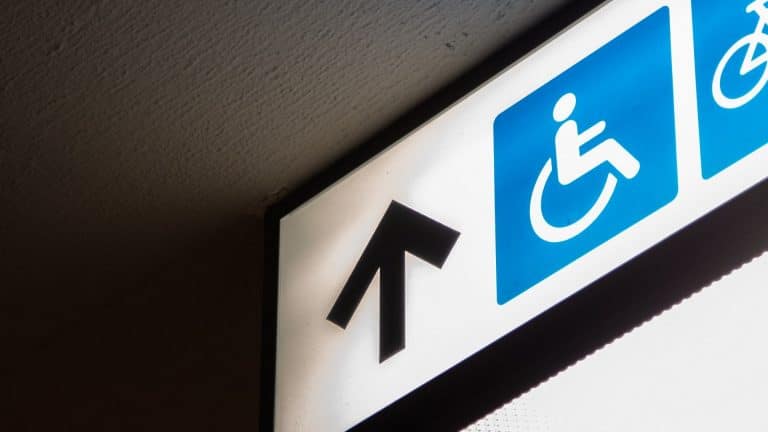30 Astonishing Insomnia Statistics & Facts for 2024

Before diving deeper into the topic, insomnia is a sleep disorder typically characterized by difficulty falling asleep or staying asleep. Insomnia can also be either acute (short-term) or chronic (long-term), depending on how long it lasts and how often it reoccurs.
According to most insomnia statistics, some of the more frequent causes include everyday stress, illness, discomfort, different environmental factors (such as a change in temperature), reaction to certain medications (used to treat allergies, depression, and so on), or jet lag. Since millions of people worldwide have insomnia and other sleep disorders, it’s essential to be informed about the most relevant statistics and facts.
Top 10 Insomnia Statistics for 2024
- An estimated 78% of pregnant women experience sleep disturbances.
- Writing to-do lists helps individuals fall asleep nine minutes faster.
- Insomnia statistics find that 75% of people with depression have insomnia.
- 30% of the female population says that their menstrual cycles disturb their sleep.
- Up to 30% of American adults have short-term insomnia, based on insomnia statistics.
- The increase in the clinical insomnia rates from before to the pandemic’s peak is 37%.
- The insomnia rate in study participants who had COVID-19 was 74.8%.
- Insomnia stats reveal that up to 75% of the elderly population has insomnia symptoms.
- Prolonged-release melatonin has shown a 66% improvement rate with insomnia.
- About 2.28% of GDP is lost because of sleep deprivation in the US.
Insomnia Prevalence
Around 70 million US citizens have a sleep disorder, with insomnia being the most common one. In fact, 10% of people in the US have long-term (chronic) insomnia. Read this section for more information.
[visualizer id=”98421″ lazy]
Source: Goodpath
1. Up to 30% of American adults have short-term insomnia, based on insomnia statistics.
(The Recovery Village)
Extensive research has confirmed that insomnia is a relatively prevalent health complication, affecting millions of people annually. Furthermore, 70 million US citizens have a sleep disorder, based on sleep deprivation statistics in America. All in all, considering insomnia’s toll on physical and mental health, its prevalence rates are shocking.
2. Around 10% of adults have chronic insomnia in the US, as per insomnia statistics in America.
(The Recovery Village) (Sleep Foundation)
Long-term patterns of having difficulties sleeping define chronic insomnia. That means the person has trouble falling or staying asleep at least three nights a week for three or more months. Equally important, short-term insomnia may eventually become chronic insomnia.
3. 35% of those who have insomnia report a family history of the condition.
(Online Library Wiley)
According to insomnia facts, this sleep disorder is common among those who have a family history of it. Of all family members, the patient’s mother is most frequently afflicted with current (39%) and past (43%) insomnia. In addition, the cumulative percentage of the sister, father, and daughter combined is 34% for current insomnia and 45% for past insomnia.
4. Insomnia stats reveal that up to 75% of the elderly population has insomnia symptoms.
(NCBI)
Research has found that insomnia becomes a more serious problem later in life. Even though about 20% of the elderly are treated with sleep medication, the first-line treatment for insomnia is cognitive-behavioral therapy. Moreover, insomnia screening is vital. It promotes early intervention and reduces the pharmacological management potential.
5. Panic disorder patients have a 68%–93% likelihood of having insomnia.
(NCBI)
This chronic mental illness has frequently been linked to insomnia, as insomnia facts prove. Researchers have discovered that insomnia is more commonly present in panic disorder patients than in the general population. The prevalence of some form of insomnia in these patients might be explained by depression, nocturnal panic attacks, and chronic anxiety.
Women and Insomnia: Facts and Statistics
The most common sleep disorder is insomnia, and women are 40% more likely to experience it than men. They are also more prone to daytime sleepiness. All in all, there are plenty of reasons why this disorder is more prevalent in women, so let’s find out as we go into more detail in the section below.
6. 61% of postmenopausal women experience insomnia symptoms.
(Sleep Foundation)
After a woman reaches menopause, the ovaries begin producing fewer hormones, including estrogen and progesterone (a sleep-producing hormone). Also, women in menopause may experience hot flashes and night sweats, making it even more challenging to get proper rest.
7. Women have a 40% higher prevalence of insomnia than men.
(Sleep Foundation)
The reason women are more likely to suffer from insomnia and other sleep-related disorders lies in hormonal differences. More precisely, what contributes to women not getting enough sleep is that during menstruation, they deal with cramps and bloating, then, during pregnancy—with restless leg syndrome, and during menopause—with hot flashes.
8. An estimated 78% of pregnant women experience sleep disturbances.
(NCBI)
According to data on sleep, these disturbances happen because of changes in standard sleep/wake patterns. The most common sleep disturbances reported by women who are pregnant are insomnia, sleep deprivation, daytime napping, excessive daytime sleepiness (EDS), night walking, and restless leg syndrome.
9. 30% of the female population says that their menstrual cycles disturb their sleep.
(Patient)
Also, approximately 23% have sleep disturbances the week before their menstrual cycle. It might be explained by a significant drop in estrogen and progesterone levels. Considering how many people have insomnia, this number is astoundingly high.
10. 10.8% of the female population reports restless legs syndrome.
(NCBI)
Restless legs syndrome, commonly called RLS, is a neurological movement disorder characterized by an uncomfortable sensation in the legs and an urge to move them. Due to its nature, it may disrupt sleep patterns and contribute to insomnia. Additionally, studies have disclosed that it is 54%–69.4% heritable.
Causes of Insomnia
There are many things out there that might trigger insomnia, like emotional issues (stress, anxiety, depression), bad habits, irregular sleep routines, poor physical health, and so on. Before treating insomnia, you need to understand what causes insomnia in general and what triggers it for you, specifically.
11. Individuals who are under a lot of stress are at risk of developing insomnia.
(ADAA)
Two of the most notorious causes of insomnia include stress and anxiety, both of which make it difficult for an individual to get a good night’s rest. One of the best things to do in such cases is to meditate, play soft and calming music, exercise more, or talk to someone (engage in therapy).
12. A third of the risk of insomnia is due to genetics.
(WebMD)
If you can’t sleep at night, maybe genetics is to blame. The same research carried out by American and British scientists also found some evidence that increased insomnia symptoms almost double the chances of developing a coronary artery disease.
13. Insomnia statistics find that 75% of people with depression have insomnia.
(Sleep Foundation)
Depression is linked to some sleep issues, like insomnia, hypersomnia, and obstructive sleep apnea, with insomnia being most common. Furthermore, around 20% of people with depression experience obstructive sleep apnea, which is commonly treated with the use of CPAP machines. Hypersomnia is experienced by 15% of people with depression. During a single period of depression, many people may go back and forth between insomnia and hypersomnia.
14. Adults who binge drink have an 84% greater risk of having insomnia.
(AASM)
These sleep statistics refer to adults who binge drink at least two days per week, compared to non-binge drinkers in the US. This frequent binge drinking has a considerable impact on insomnia symptoms.
15. Obese individuals have higher insomnia rates or difficulty with sleep.
(Sleep Foundation)
The reasons for this can be that obesity may change metabolism and sleep/wake cycles in a way that disrupts sleep. Also, obesity is related to fatigue and increased daytime sleepiness, even in those who sleep undisturbed during the night.
Consequences of Insomnia: Facts and Stats
The acute or chronic forms of insomnia may result in a lack of energy, a decreased ability to focus, and even severe cognitive impairment and overall fatigue. Also, individuals who have insomnia cannot perform ordinary everyday tasks optimally, which reduces their quality of life. Keep on reading for more.
[visualizer id=”98423″ lazy]
Source: Wiley Online Library
16. Drivers with less than five hours’ sleep have 4–5 times’ risk of a car crash.
(Drowsy Driving)
In addition, statistics on insomnia uncover that those who sleep 6–7 hours are twice as likely to have a crash than those who sleep for eight or more hours. In other words, insomnia results in sleepiness and the inability to focus properly. Sleepiness further contributes to attention lapses, and it also slows down the reaction time, which makes insomniac drivers a danger. All in all, the less people sleep, the greater the chances of a crash.
17. Insomniacs have a 28% greater chance of developing diabetes, as per insomnia statistics.
(NCBI) (Sleep Foundation)
It seems these two conditions are interrelated since one in two people with type 2 diabetes has sleep problems. The reasons behind this are the unstable blood sugar levels, and as with many other chronic conditions, what may keep you up at night are stress and depression linked to the disease itself.
18. Insomnia facts affirm that insomnia contributes to lower libido levels.
(ABC7)
If your sexual life needs a boost, you should try to spend more time having a good quality sleep. This data comes from research examining people in their early to mid-60s. Be that as it may, no matter what age, not getting enough sleep impacts testosterone levels, causing a lack of sexual desire and erectile dysfunction. While some people might consider turning to testosterone boosters, others rely on having a good night’s sleep.
19. Insomnia statistics break the news that the COVID-19 pandemic brought about an increase in insomnia.
(UC Davis Health)
Even before the ongoing pandemic, healthcare providers were worried about the increase of insomnia and its impact. Now, medical experts assure the coronavirus has led to yet another pandemic—the one of “coronasomnia.”
20. The increase in the clinical insomnia rates from before to the pandemic’s peak is 37%.
(NCBI)
Insomnia facts emphasize that sleep disturbances may be the result of major stressful events, such as the COVID-19 pandemic. Namely, the rates of clinical insomnia have risen from 14.6% before the pandemic to 20% at its peak.
21. The insomnia rate in study participants who had COVID-19 was 74.8%.
(JCSM)
A study involving participants from 13 countries examined sleep problems during the pandemic. Its insomnia statistics showed a 35.7% global prevalence rate of sleep problems. Additionally, one-third of healthcare workers were found to have poor sleep quality, with the problem being most severe among frontline workers.
Insomnia Treatment Facts
Fortunately, insomnia can be treated in a number of ways. Be it sleep medication or CBT sessions—one can select what meets their needs from various treatment options. Read on to learn more.
22. Writing to-do lists helps individuals fall asleep nine minutes faster.
(Casper)
Thoughts and worries, like an ongoing project at work, the latest news, or unpaid bills, tend to keep us up at night. When it comes to insomnia, interesting facts about the condition show that cognitive techniques such as journaling and writing worries and concerns down on a piece of paper may help us adopt healthier sleeping patterns. So next time you are having a hard time falling asleep, make sure you put pen to paper and get rid of your worries.
23. Sleep restriction is a highly effective treatment for insomnia, as per data on sleep.
(SHSO)
It all boils down to limiting the amount of time spent sleeping in bed, increasing the desire to sleep at an appropriate time during the night. This method was developed by a neurologist and specialist in sleep medicine, Dr. Arthur Spielman, from New York.
24. Facts about insomnia note that moderate exercise helps improve sleep quality.
(Sleep Foundation)
Moderate to vigorous exercise increases sleep quality by reducing sleep onset, the time it takes to fall asleep, and decreasing the time people lie awake in bed at night. Also, facts about insomnia as a sleep disorder imply that physical activity helps alleviate daytime sleepiness and reduces the need to use sleep medications for some people.
25. Prolonged-release melatonin has shown a 66% improvement rate with insomnia.
Prolonged-release melatonin is a formulation releasing melatonin in the gut, and it is administered orally to provide melatonin into circulation for the next 8–10 hours.
A study involving patients over the age of 55, who were prescribed PRM, found that out of the 35 subjects who completed the follow-up, 23 had noticed improvements in insomnia symptoms after taking PRM.
26. Use stimulus control for alleviating symptoms of insomnia.
(SHSO)
This technique suggests that it’s better to stay awake in your living room all night rather than toss and turn in your bed. It would help if you got up from bed after trying to fall asleep for 20 minutes and did something you usually do to relax. When you start feeling sleepy, go to bed again and try to fall asleep for 20 minutes. If you fail again, repeat this process.
Insomnia Facts and Statistics: The Economic Impact
Our body doesn’t function well if we don’t get enough sleep. Brain neurons are then overworked, thinking is impaired, and our physical reactions become slow. As for insomnia affecting work, these side effects of sleep deprivation can decrease our productivity and affect the quality of our work. In the next section, you’ll learn about the economic impact of insomnia.
27. $146 billion are spent annually on medical costs related to sleep disorders.
(Scielo)
Insomnia facts and statistics reveal that people with sleep disorders report excessive fatigue, mood swings, reduced pain tolerance, and sleepiness, increasing medical care and medicine use.
28. Annually, insomnia and sleep deprivation cost the employer $2,280 per employee.
(Sleep Advisor)
If you want to know how many employed people have insomnia, about 35% of employed study participants reported not getting enough sleep. What’s more, those who keep thinking and overanalyzing stressful work experiences outside of work report insomnia more frequently than those who can make these worrisome thoughts go away.
29. The US government pays more than $15 billion yearly on insomnia-related healthcare costs.
(BSBL) (PubMed)
Insomnia statistics in America indicate that the country loses approximately $150 billion a year due to absenteeism and lost productivity. Notably, a study has found that the economic burden of insomnia is so high that 76% of all expenses are attributable to work absences and reduced productivity due to insomnia.
30. About 2.28% of GDP is lost because of sleep deprivation in the US.
(Sleep Advisor)
When it comes to the economic impact of those sleep-deprived, statistics break the news that the percentage of GDP lost due to sleep deprivation in Canada is 1.35%. Then, it’s 2.92% for Japan and 1.56% for Germany. Also, insomnia statistics for the UK show that the percentage of GDP lost due to sleep deprivation is 1.86%.
Conclusion
Many people experience an ongoing, severe struggle with insomnia. Remember that before attempting to find a solution, it’s vital to get to the root cause. All in all, we hope that these statistics and facts will help you understand insomnia better and find ways to improve your sleep habits.
FAQs
What is insomnia?
Insomnia is defined as a sleep disorder characterized by having problems falling asleep, staying asleep during the night, and sleeping as long as you want in the morning. This disorder can lead to severe health complications and even increase the risk of car accidents.
What percentage of the population suffers from insomnia?
Studies worldwide have revealed that insomnia is present in approximately 10%–30% of the global population. However, some insomnia statistics in the world from 2020 indicate that the number of those with sleep problems goes up to 60%. Notably, insomnia is more common in women, older adults, and people with physical and mental health issues.
What are the 3 types of insomnia?
The three types of insomnia are acute, transient, and chronic insomnia. Acute insomnia lasts for up to a month and is usually caused by exams, a new job, or deadlines. Transient insomnia lasts for less than a week and is caused by depression, stress, or changes in one’s sleep environment. Finally, chronic insomnia lasts for more than a month, and it is related to chronic conditions.
What age group does insomnia affect the most?
The most affected are people aged 60 and over. Generally, older people are at higher risk of various chronic conditions, restless legs syndrome, or sleep-disordered breathing, leading to insomnia symptoms. Additionally, our sleep-wake cycles change as we age, affecting how long and how well we sleep.
What percent of the population is sleep-deprived?
In the US, 70% of adults report having insufficient sleep at least one night per month. Moreover, about 11% report not getting enough sleep every night. Overall, insomnia statistics point out that 50–70 million Americans of all ages and socioeconomic classes have sleep-related problems.






